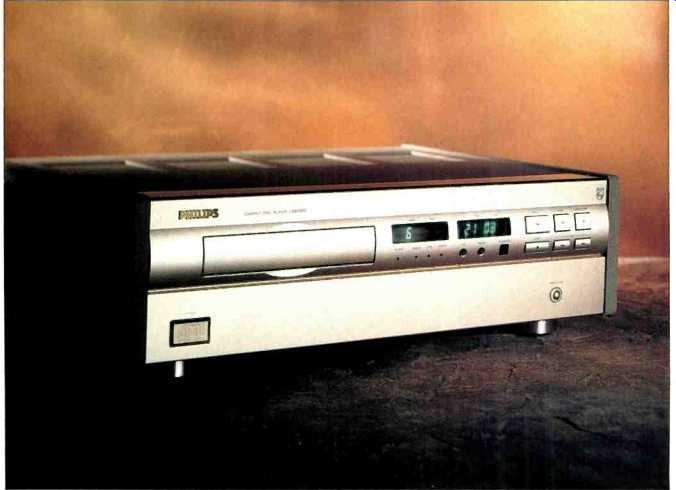
Manufacturer's Specifications:
Frequency Response: 20 Hz to 20 kHz, ± 0.5 dB; overall, 2 Hz to 20 kHz.
S/N: Greater than 96 dB.
EIAJ Dynamic Range: Greater than 96 dB.
THD: Less than 0.0025% at 1 kHz.
Crosstalk: Greater than 96 dB.
Output Level: 2 V rms via RCA-type (unbalanced) jacks; 3V rms via balanced XLR jacks.
Channel Balance: Less than 0.5 dB, unbalanced outputs; less than 1 dB, balanced outputs.
Number of Programmable Selections: 20.
Power Requirements: 17 watts.
Dimensions: 18 in. W x 5 1/2 in. H x 14 1/8 in. D (45.7 cm x 14 cm x 35.9 cm).
Weight: 36 3/4 lbs. (16.7 kg).
Price: $2,000.
Company Address: One Philips Dr., Knoxville, Tenn. 37914, USA.
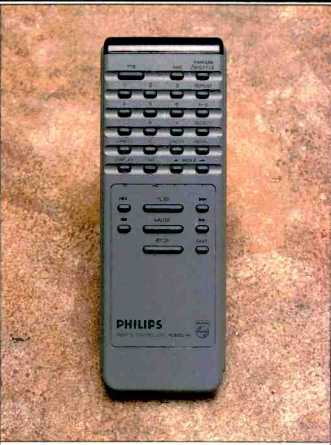
According to Philips, the LHH designation is applied only to the company's most technically sophisticated consumer and professional components. For example, their flagship consumer model CD player, consisting of a separate transport and D/A converter, bears the model number LHH1000 (reviewed in the January 1990 issue). In the professional audio area, the LHH8000 is a Compact Disc manufacturing system that occupies only 2,500 square feet of floor space but can turn out completed CDs-from formatted master tape to finished discs-in about six hours.
The Philips LHH500-the subject of this report-was only the second CD player offered to consumers that bears the LHH designation. I expected, therefore, that it would be special. In many respects it is; in some respects it is not.
The LHH500 employs the Philips bitstream PDM (Pulse Density Modulation) D/A conversion technology. The player uses not two, but four D/A converters. Two converter pairs operating in differential mode are said to provide an increase in signal-to-noise ratio of about 4 dB compared to single converter-pair operation.
In the LHH500, two PDM D/A converters are used per channel. Each channel's digital data stream is split in two, and one of the resulting streams passes through a bank of flip-flop circuits, which invert it digitally. The inverted and non-inverted data streams pass through separate D/A circuits, whose outputs are then combined. This results in a gain increase of 6 dB, and a noise increase of only 2 dB, for an overall 4-dB increase in dynamic range. The analog outputs of the two converter pairs are then fed to op-amps, combined, buffered, and, when necessary, de-emphasized.
Outputs include both unbalanced RCA and transformer coupled, balanced, XLR analog jacks and both optical and coaxial digital types.
The LHH500 offers convenience features that should appeal to music lovers, too. Favorite Track Selection (FTS) lets you program the unit to automatically play only your favorite tracks or sections from specific CDs. Several hundred selections can be stored in nonvolatile memory that holds its contents even when the player is turned off. The precise number of tracks depends on the number of discs as well as the number of tracks stored per disc. For example, if an average of five selections are stored per disc, FTS can accommodate 137 discs; with fewer selections per disc, up to 254 CDs can be accommodated. The player's "FTS" indicator light blinks if FTS programming has been stored for the currently loaded disc. Familiar features such as repeat play, A-B repeat, and shuffle (random track) play are also provided. To keep the appearance of the front panel simple, many of the LHH500's features are controlled only by means of the supplied wireless remote. The repeat-play and FTS functions-as well as display on/off-can be controlled from either the front panel or the remote control. But only the remote unit can control automatic music scan, shuffle play, skipping from index point to index point, and fast search at two speeds. The remote also enables you to access and program tracks directly by number.
Control Layout
The LHH500's "Power" switch and motorized disc tray are in the usual locations. To the right of the disc tray are two separate display areas, one that shows track and index numbers and another that displays minutes and seconds.
Beneath the first display are four small indicator lights that show when the display is off, when a repeat mode has been engaged, when FTS is being used, and when an error in programming (such as going beyond the number of selections or FTS choices that the player can handle) has taken place. The "FTS" and "Repeat" pushbuttons are located beneath the second display.
Further to the right are the buttons handling "Play," "Pause," "Stop," and track "Skip" (forward and backward). A button for opening or closing the disc drawer is also located here. Finally, at the lower right corner of the panel is a button for turning the displays on and off.
Measurements
Figure 1 shows the frequency response of the CD player.
A small difference between channel output levels, amounting to about 0.25 dB at the middle frequencies, is noticeable, as is a slight ripple in response near the high end of the spectrum. I have seen this sort of ripple before in another CD player employing the Philips bitstream D/A technology.
While it is of little concern to me in terms of audible effect, I wonder why this occurs and why I don't see it with CD players that employ other forms of one-bit D/A conversion.
Figure 2 is a plot of THD + N versus frequency for signals recorded at maximum digital level. At the middle frequencies, THD + N measures no more than 0.003%, while of 20 kHz, it increases to 0.032%. Figure 3 is a plot of THD 1N for a 1-kHz test signal, with dB readings referred to 0 dB, or maximum recorded level. Even at this high level, THD + N measures 90.8 dB below maximum recorded level, corresponding to a THD + N percentage of 0.0029% and correlating almost perfectly with the results shown in Fig. 2 for a 1-kHz signal.
Figure 4 shows an FFT spectrum analysis of a 1-kHz, 0 dB signal taken at the player's analog output. The most significant, albeit minute, harmonic components visible are at 9 and 13 kHz. Computing their net contribution to actual THD (noise has been "averaged" out by sampling the data 16 times) results in a figure of 0.003%. Measurement of SMPTE-IM distortion at maximum recorded level resulted in readings of 0.0043% and 0.0045% for the left and right channels, respectively.
I also performed a spectrum analysis (not shown) of a 10 kHz signal reproduced from my CBS CD-1 test disc. There was only 0.021% second harmonic, but other spurious out of-band components, caused by "beats" between the CD clock frequency and the 10-kHz signal (at 34.1 kHz and 54.1 kHz, for example), measured as high as 0.05%. A-weighted S/N for the LHH500 measured 97.9 dB for the left channel and 96.7 dB for the right channel. A 1/3-octave spectrum analysis of noise versus frequency is shown in Fig. 5. Other than the expected slight rise in noise at high frequencies, the only significant noise "peak" occurs at 120 Hz, the second harmonic of the power-line frequency. That peak, however, measures an insignificant 107 dB on the left channel and-105 dB on the right channel, referred to maximum recorded level of a CD. Channel separation (Fig. 6) is excellent, in excess of 110 dB at 1 kHz and more than 90 dB even at 20 kHz.
Figure 7 shows deviation from linearity for both dithered and undithered test signals. With undithered test signals in the range from 0 to-90 dB, linearity is excellent down to -80 dB, but at-90 dB it deviates by 3.4 dB in the right channel and 4.1 dB in the left. For dithered signals, the results at 90 dB are similar, and linearity actually improves slightly at 100 dB. In theory, bitstream and other one-bit D/A converters are supposed to take care of such minor nonlinearities, and the nonlinearities observed here may well be caused by factors other than D/A conversion, such as self-dither noise introduced by the player itself.
Figure 8 is a plot of the fade-to-noise test, using a dithered signal fading from-60 to 120 dB, as a further assessment of linearity and as a means of establishing the EIA dynamic range. Deviation from linearity at these low levels is fairly consistent with the readings in Fig. 7, and EIA dynamic range was estimated to be about 106 dB. Measured according to the EIAJ method, dynamic range was 92.3 dB for the left channel and 91.5 dB for the right channel. A test using a unit-pulse signal (not shown) revealed that this player maintains correct polarity at its output terminals. Clock frequency accuracy was within 0.0008%.
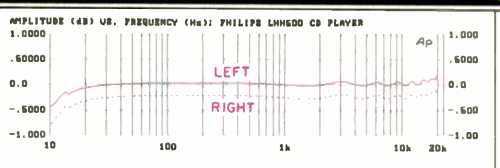
Fig. 1--Frequency response.
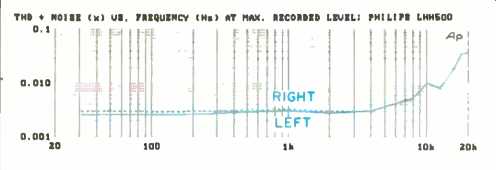
Fig. 2

Fig. 3--THD + N (In dB re: maximum recorded level) vs. signal amplitude.
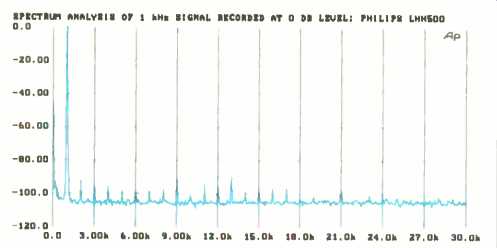
Fig. 4--Spectrum analysis of 1-kHz signal at 0-dB level.

Fig. 5--Spectrum analysis of residual noise when playing "no-signal" track
of CD-1 test disc.
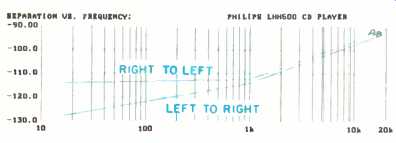
Fig. 6--Interchannel separation vs. frequency.
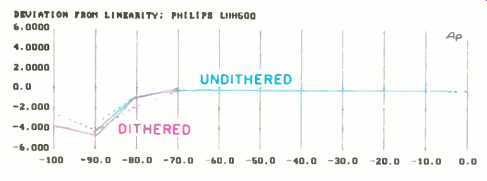
Fig. 7--Deviation from linearity for left channel (solid curve) and right
channel (dashed curve).
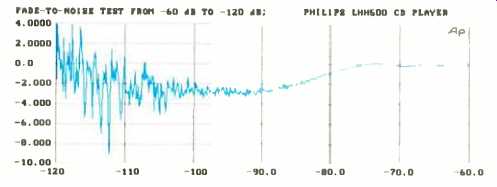
Fig. 8--Fade-to-noise test.
Use and Listening Tests
Having tested several CD players that employ one form of one-bit D/A conversion or another, I am convinced that this technology (whether you call it bitstream, MASH, High Density Linear Conversion, or whatever) has much to commend it sonically. In playing CDs on this unit, I was impressed by the complete absence of a harshness that I had previously blamed on some of my earliest-acquired CDs. Others have told me that, with some of the better current-generation CD players, their oldest CDs suddenly didn't sound nearly as brittle and raspy as they had remembered. With players such as the Philips LHH500 and a few others that I have tested in the last year or two, I was able to confirm these claims myself.
I still own a first-generation portable CD player and a fairly low-cost second-generation home CD player--both circa 1985 or thereabouts. Let me tell you that the same "old" CDs played on the LHH500 sounded a lot better than they did on my early CD players. Among the discs tested in this manner (just in case you own them and want to try the same experiment) were Bruce Springsteen's Born in the USA (Columbia CK-38653), a CBS disc (MK-35854) featuring Leonard Bernstein and the New York Philharmonic in Shostakovich's Fifth Symphony, and an early CD recording of Beethoven's Fifth Symphony and Schubert's Symphony No. 8, "Unfinished" (CBS MYK-36711).
From some later CD releases, I chose a couple of Delos recordings that I have used before, simply because I find that when listening to chamber music I am more easily able to separate the superb equipment from the merely excellent and the excellent from the just adequate. Listening to the Mozart Quintet in E Flat for Piano and Winds, K.452, (D/CD3024), or to the Brahms Quintet No. 2 in G for Strings, Op. 111 (DE-3066), as reproduced by the Philips LHH500 and the rest of my reference system, represented pure joy, as I forgot about the equipment and was completely captivated by the music. That's one thing about superior equipment such as this-you tend to forget it and to concentrate on the music.
Returning from the sublime to the practical, I made my final check to see how the unit behaved in the presence of severe disc errors or missing data. Using the Pierre Verany test discs designed for this purpose, I literally could not believe my oscilloscope! (I not only listen to these test tones for glitches but observe them on a 'scope, because sometimes a minor glitch or mistracking is observable even though it is inaudible.) The LHH500 was able to play through areas of this test disc in which there was missing data for a full 3 mm of scanning distance. Being able to correct for 1 mm of missing data is considered very good; 2 mm is excellent, so I don't know quite how to characterize this amazing ability of the LHH500 except to say that it is a near miracle. Furthermore, I was able to literally pound on the outer case of this solidly built machine with my fist without making the laser pickup mistrack--at least not so that I could hear any glitches or even momentary muting.
Before I tested the LHH500, a Philips spokesman suggested I hold a block of wood against it (to protect its lovely gold-colored finish) and pound on that block with a ball peen hammer. I couldn't quite bring myself to go to that extreme, however--such is my respect for this beautifully built, feature-laden player from a co-inventor of the optical laser-read CD system.
--Leonard Feldman
(Source: Audio magazine, Apr. 1992 )
Also see:
Philips LHH1000 compact disc playback system (Jan. 1990)
Philips LHH500 Bitstream cd player (ad, Nov. 1990)
= = = =